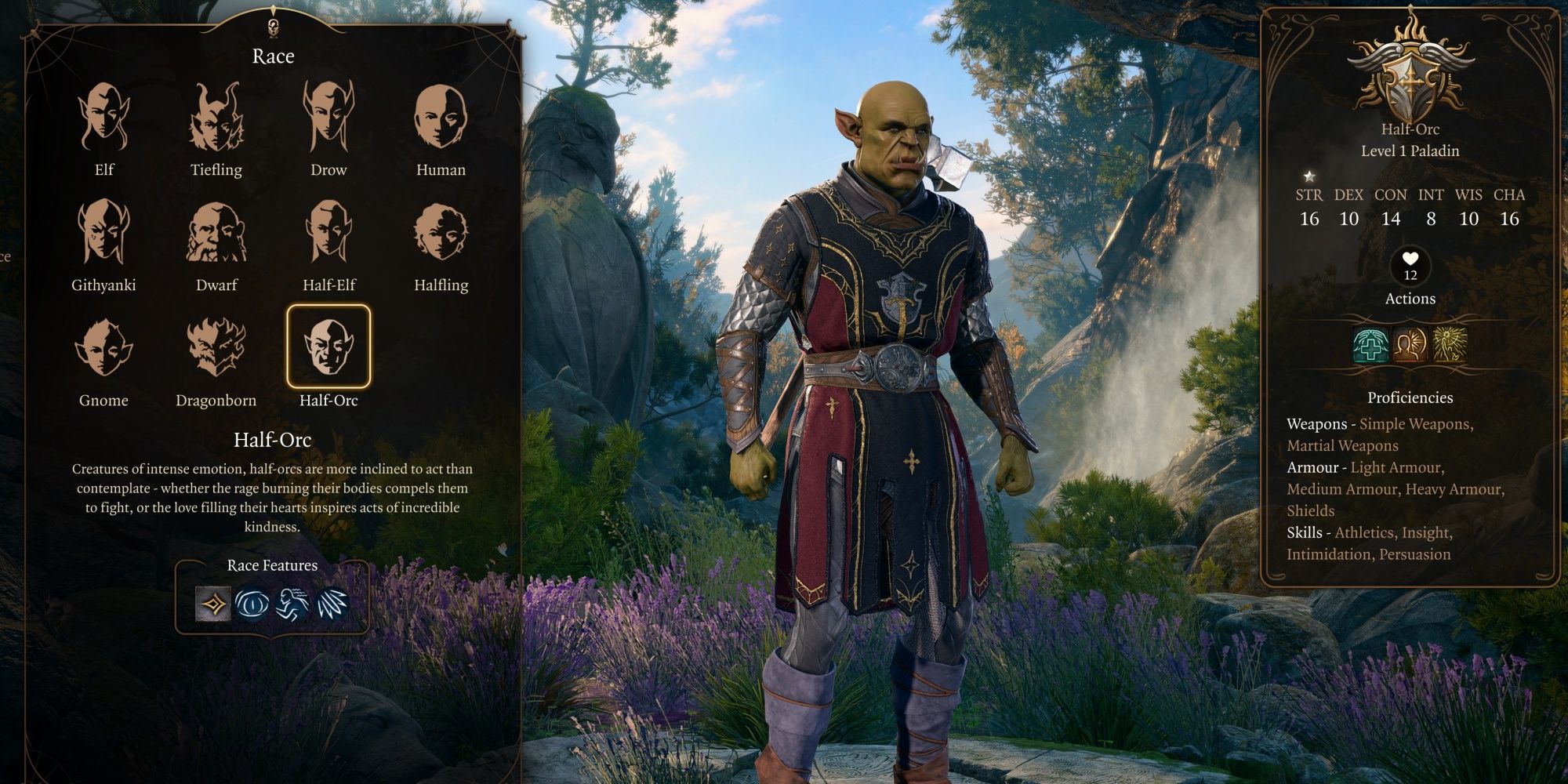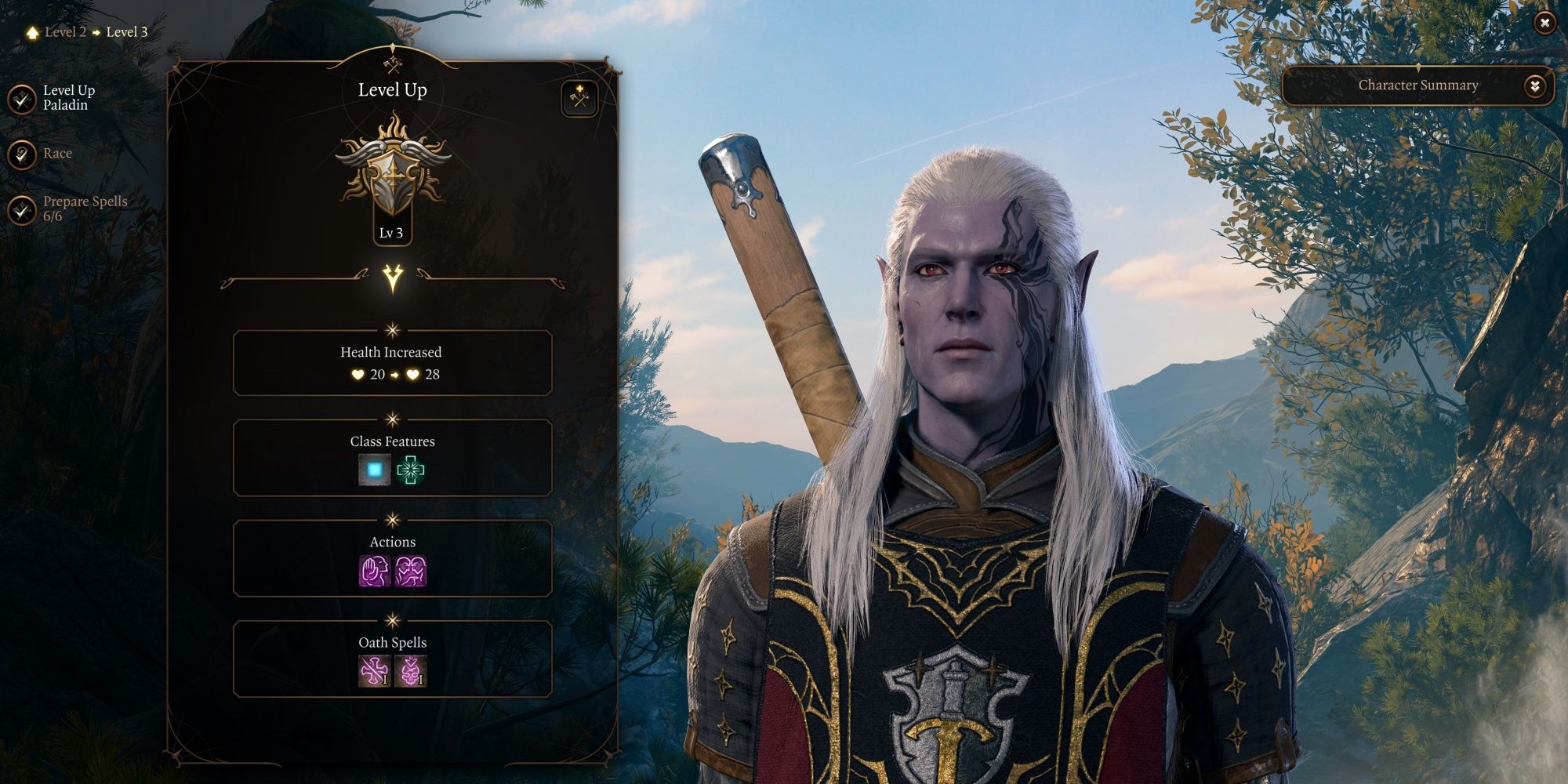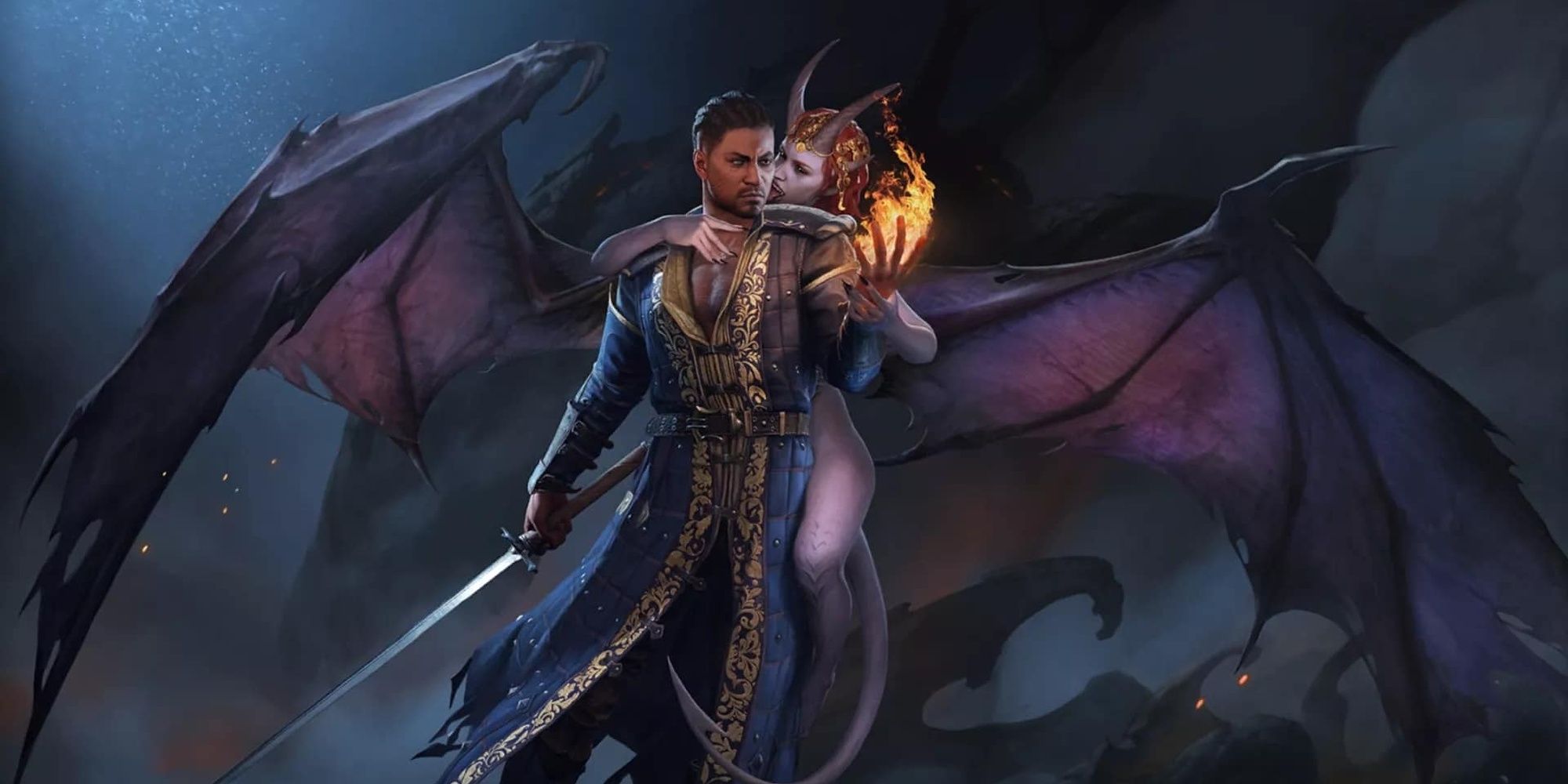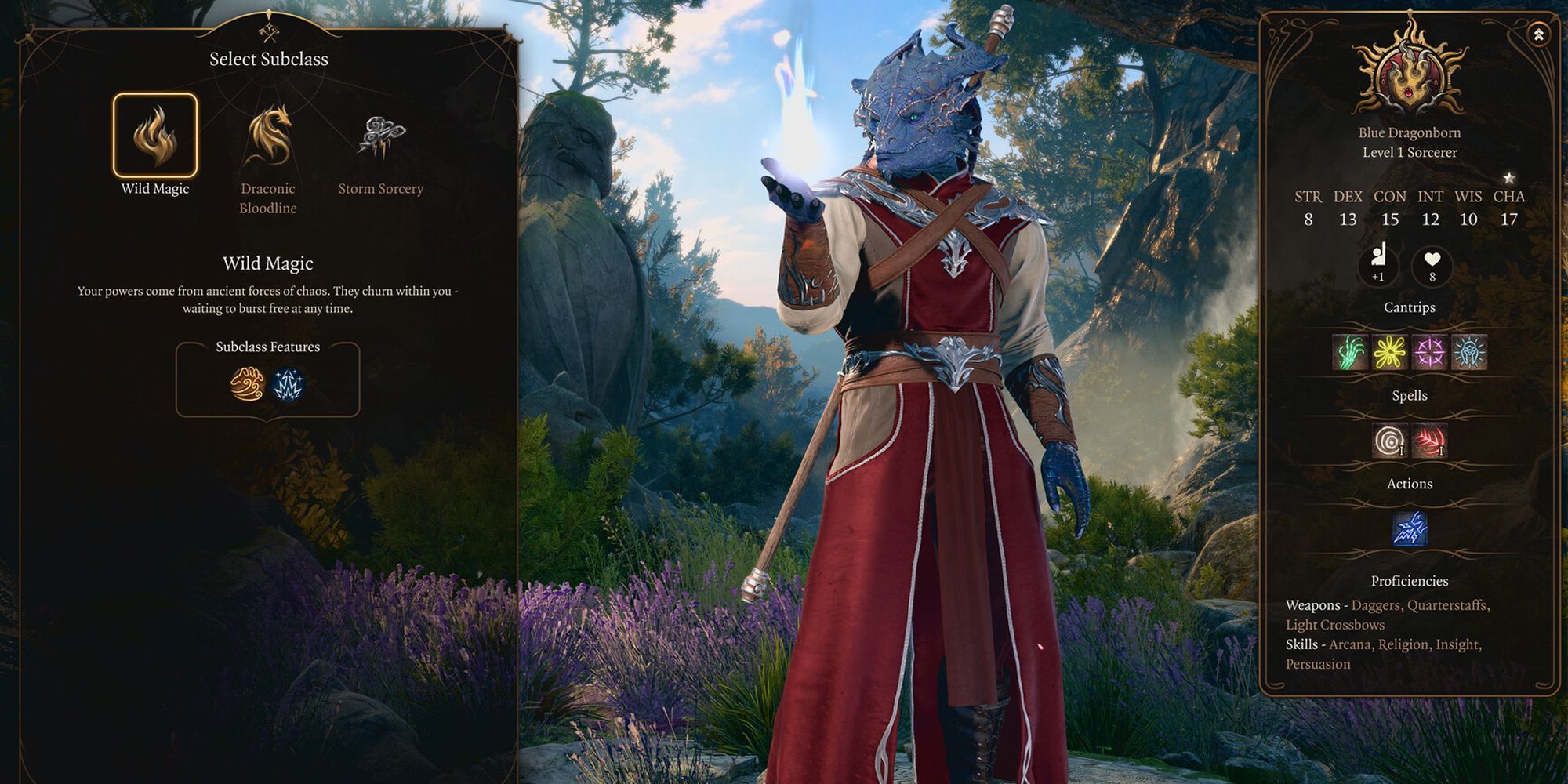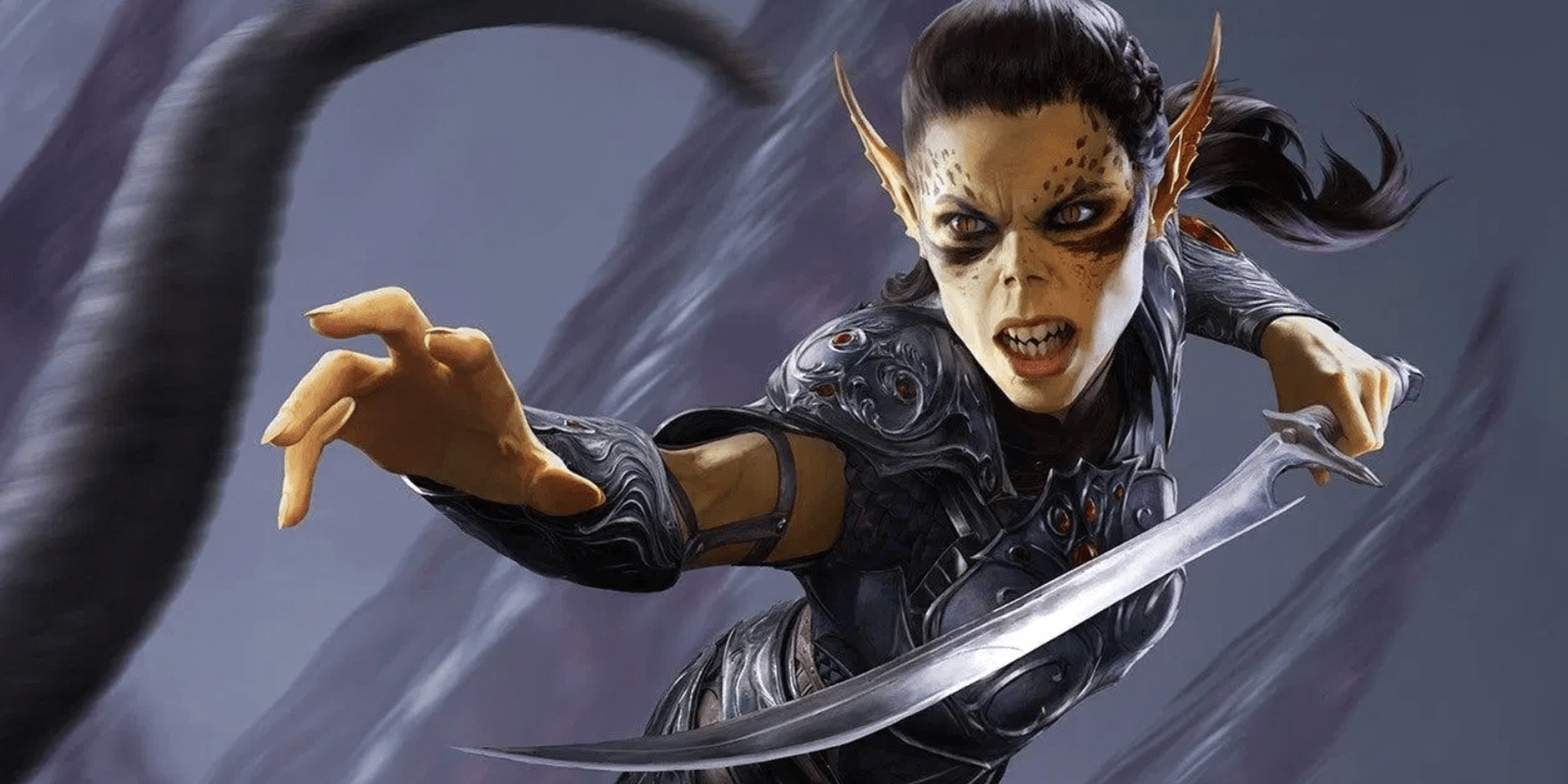Quick Links
Baldur's Gate 3 has 12 unique classes for players to choose from, ranging from skilled fighters to arcane spellcasters. Paladins serve as a great starting class for most, capable of fulfilling virtually any role the party requires. Persuade your allies, smite your enemies, or buff your team with a wide range of spell options.
But as well-rounded as the Paladin is, they have a few issues that hurt their endgame scaling. Fortunately, Baldur's Gate 3 lets you multiclass, taking levels of another class to help build the exact character you desire. This guide will showcase why you'd want to multiclass as a Paladin and which combinations are worth considering.
What Makes A Good Multiclass For Paladins?
Compared to most classes in Baldur's Gate 3, Paladins are fantastic on their own and quite well-rounded. Each Paladin level offers something useful that makes multiclassing unnecessary for most playstyles. With that said, Paladins do have a few weaknesses that multiclassing can solve:
- Paladins have a small pool of spell slots.
- Ranged options are limited.
- Their damage falls behind slightly at higher levels.
The versatility that Paladins bring means that they're a jack-of-all-trades class for most builds, sacrificing the raw damage of a dedicated martial or spellcaster class for more utility and survivability. Multiclassing into a Charisma-based spellcaster or another martial class can make the Paladin a more competitive DPS option. For example, pairing the Paladin with a Sorcerer can create a devastating spellblade character with unparalleled group buffs. If melee combat sounds more interesting, multiclassing as a Fighter or Barbarian can help buff the Paladin's melee prowess.
When Should You Multiclass As A Paladin?
It's difficult to give a specific level recommendation since Paladins have excellent level-up incentives for all 12 levels. In general, levels seven and nine offer the weakest bonuses to your character, ideal for multiclassing. Level seven specifically is when you receive an Oath subclass feature, ranging from quite useful (Ancient's Aura of Warding) to niche (Vengeance's repositioning passive). Level nine unlocks more spell slots for your character, but you can compensate for this by multiclassing as a dedicated spellcaster.
If you're interested in speccing into Paladin for a few levels as a different class, ideal breakoff points are levels two, three, or six.
- Level Two: Unlocks Divine Smite and Paladin spells.
- Level Three: Unlocks an Oath subclass feature.
- Level Six: Unlocks Aura of Protection, adding your Charisma modifier to all saving throws.
Martial characters speccing into Paladin should invest at least two levels into the class, as this gives you access to Divine Smite and some solid first-level spells. Level three is a decent breakpoint if your character is a Vengeance or Devotion Paladin. Casters or martial/spellcaster hybrids will want to reach level six if possible, as Aura of Protection affects every saving throw check in the game.
Warlock Multiclass
Pros | Cons |
|---|---|
|
|
Taking a few levels as a Warlock is an excellent idea for most Paladin builds. You'll gain two spell slots that refresh on short rest, allowing you to replenish Divine Smite charges between long rests. A single level will give you access to Eldritch Blast, arguably the strongest Cantrip in Baldur's Gate 3. This Cantrip fires a beam that deals 1d10 force damage. That alone might not sound powerful, but Eldritch Blast fires additional beams based on character level, not Warlock level. This means that by level 11, you'll fire three beams of 1d10 force damage, capable of aiming each beam at different targets as needed.
If you're willing to add another Warlock level, you'll gain two Eldritch Invocations that behave similarly to feats. Since you're already scaling Charisma, grab Agonizing Blast to add your Charisma modifier to Eldritch Blast's damage. This works per beam, so you effectively gain +15 damage if you're level 11 and have 20 Charisma. The second Invocation is up to your build, but some good options include Repelling Blast to push targets back with each Eldritch Blast beam or Devil's Sight to see through magical darkness. Devil's Sight is perfect for melee-focused builds, while Repelling Blast offers some great utility to Eldritch Blast.
With the Devil's Sight Invocation, you can cast the Darkness spell atop yourself to prevent ranged enemies from targeting you. Melee attacks made inside the cloud will have advantage, and enemy attacks made against you will have disadvantage.
A Warlock's third level will let you choose a Pact. Pact of the Blade is hands-down the best choice, as it lets you use your Charisma modifier for attack rolls over Strength or Dexterity. Charisma will effectively buff every aspect of your build, letting you focus on Constitution as your second stat over Strength or Dexterity. Level four is an ability score improvement, but all levels beyond that offer mediocre benefits that don't suit the Paladin's playstyle. Overall, adding a few levels of Warlock to your Paladin will give you a devastating ranged spell, two spell slots that refresh on short rest, and the ability to use your Charisma modifier on weapon attacks. Any Paladin build that wants to be a frontline fighter without sacrificing utility can greatly benefit from multiclassing as a Warlock for a few levels.
Recommended Subclass
For multiclassing, most Paladin builds will want to spec for The Fiend. We recommend this subclass over others mainly for its unique spell list. Fiends can grab Burning Hands, Hex, and Armor of Agathys within the first two levels. Burning Hands gives your build some much-needed AoE damage. Hex adds necrotic damage to every damage source you inflict onto the target, triggering multiple times on multi-hit attacks like Eldritch Blast. And when damage isn't necessary, Armor of Agathys will give your character some temporary HP without requiring concentration. It's a great setup for virtually every Paladin multiclass and is generally better than your other options.
Sorcerer Multiclass
Pros | Cons |
|---|---|
|
|
Paladins looking to expand their spellcasting capabilities should look into multiclassing as a Sorcerer. Sorcerer multiclassing will grant additional spell slots over Paladin levels, unlock Metamagic options, and give you access to a larger spell list. The additional spell slots are the main reason to grab a few Sorcerer levels. More spell slots mean you can smite your foes more often between long rests, ideal for Vengeance Paladins using Hold Person to guarantee critical hits.
However, the Sorcerer is the most level-taxing multiclass for Paladins. Most Paladins will want to invest five levels into the Sorcerer, as that will unlock third-level spell slots and three Metamagic options. With five Sorcerer levels, you can buff two allies with Haste simultaneously, including yourself. Paladins can smite four times per turn with this strategy, or you can cast up to three spells in a single turn through Quickened Spell.
All of this comes with a cost, however. This multiclass combination, while powerful, drains through your resources incredibly fast. Sorcery Points, spell slots, and Lay on Hands charges all restore on long rests, not short rests. You can do some downright game-breaking things with this combo, but a long rest is necessary after one or two encounters. For lower difficulties where camp supplies are plentiful, this isn't much of an issue. But if you're playing on Tactician and need to ration your camp supplies, this multiclass combination will become a hindrance rather quickly.
Recommended Subclass
All three Sorcerer subclasses are good options. Draconic is arguably the best since it scales your HP based on Sorcerer levels taken. If you want to expand your spell list, Storm Sorcery is fantastic. First level will let you fly as a bonus action upon casting any leveled spell, and sixth level will unlock a handful of lightning-themed spells. Finally, if you don't mind taking a chance in combat, Wild Magic can be surprisingly strong. Just be wary that Wild Magic is the only subclass that can be a detriment due to the RNG nature of Wild Surge. Avoid using this subclass on Tactician difficulty.
Fighter Multiclass
Pros | Cons |
|---|---|
|
|
Fighter is a simple yet effective multiclass for nearly every build in Baldur's Gate 3, Paladins included. Classes that invest two points into Fighter will receive Action Surge, giving you an extra action once per short rest. Paladins can use this extra action to inflict more smites or cast a spell. While not the most exciting effect, Action Surge is great for giving your Paladin more options in combat when they need it most.
Two levels in Fighter are usually all you need, but adding a third level isn't a bad idea for some builds. A third level will grant access to a Fighter subclass feature, and a fourth level will grant an ability score improvement. Further levels are usually not worth taking as a Paladin since you will be behind on spell slot progression. It's not the best multiclass, but it's far from the worst.
Recommended Subclass
If you decide to invest three levels into Fighter, we find Battlemaster to be the best option. Superiority Dice can augment your attacks with utility effects or extra damage. Another good option is Champion if you want to double your critical chance—useful if you aren't using Hold Person/Monster. Eldritch Knight is also an option but doesn't offer the same utility as Battlemaster.


